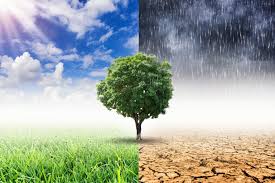The Importance of Protecting Our Environment
Our environment is a precious resource that sustains all life on Earth. From the air we breathe to the water we drink, every aspect of our well-being is interconnected with the health of our surroundings. It is essential that we recognize the significance of protecting and preserving our environment for current and future generations.
Impact of Human Activities
Unfortunately, human activities have taken a toll on the environment. Deforestation, pollution, and climate change are just a few examples of how our actions have negatively impacted the natural world. These activities not only harm ecosystems and wildlife but also pose significant risks to human health and livelihoods.
The Need for Sustainable Practices
To address these challenges, it is crucial that we adopt sustainable practices in our daily lives. This includes reducing waste, conserving energy, and supporting eco-friendly initiatives. By making small changes in our behavior, we can collectively make a big difference in protecting our environment.
Role of Advocacy and Policy
Advocacy plays a vital role in raising awareness about environmental issues and promoting positive change. By supporting organizations dedicated to environmental protection and advocating for policies that prioritize sustainability, we can influence decision-makers to take action for the greater good.
Creating a Greener Future
It is never too late to start making a positive impact on the environment. Whether through recycling efforts, community clean-up projects, or sustainable lifestyle choices, each one of us has the power to contribute to creating a greener future for all living beings on Earth.
Let us come together as stewards of the environment, committed to preserving its beauty and diversity for generations to come. By working hand in hand with nature, we can ensure a sustainable future where both humans and wildlife thrive in harmony.
Frequently Asked Questions About the Definition and Types of Environment
- What is the best environment definition?
- What are the 4 types of environment?
- What is the 3 types of environment?
- What is an environment definition?
- What is the definition of environments?
- What are 5 examples of environments?
- What is the definition of an environment?
What is the best environment definition?
When considering the best definition of the environment, it is important to understand that the environment encompasses all living and non-living things that surround us. It includes the air we breathe, the water we drink, the land we walk on, and the ecosystems that support life on Earth. The best environment definition emphasizes the interconnectedness of all elements in nature and highlights the delicate balance required for a healthy planet. It recognizes that our actions have a direct impact on the environment and underscores the need for conservation, sustainability, and responsible stewardship to ensure a thriving world for present and future generations.
What are the 4 types of environment?
There are four main types of environments that play a crucial role in shaping our world: the natural environment, the built environment, the social environment, and the economic environment. The natural environment encompasses all living and non-living things found in nature, such as forests, oceans, and wildlife. The built environment refers to human-made structures like buildings, roads, and cities that impact how we live and interact with our surroundings. The social environment involves the relationships and interactions between individuals and communities, influencing our behaviors and well-being. Lastly, the economic environment includes factors like resources, businesses, and financial systems that affect our society’s prosperity and sustainability. Understanding these diverse environments is essential for promoting a balanced and harmonious relationship between humans and the world we inhabit.
What is the 3 types of environment?
The concept of the environment encompasses various aspects that influence living organisms. In general, the environment can be categorized into three main types: the physical environment, which includes natural elements like air, water, and land; the biotic environment, which consists of living organisms such as plants and animals; and the social environment, which comprises human interactions and societal structures. Understanding these three types of environments is crucial in recognizing the interconnectedness of all living beings and the importance of maintaining a balance for sustainable coexistence on Earth.
What is an environment definition?
The definition of environment refers to the surroundings in which living organisms exist, encompassing both natural and man-made elements. It includes the air, water, soil, plants, animals, and human activities that collectively form the ecosystem in which life thrives. Understanding the environment is crucial for recognizing the interconnectedness of all living beings and the impact of human actions on the delicate balance of nature. By acknowledging the complexity and diversity of our environment, we can strive to protect and preserve it for a sustainable future.
What is the definition of environments?
The term “environment” refers to the surroundings and conditions in which living organisms exist. It encompasses the physical, biological, and social factors that influence an organism’s well-being and interactions with its surroundings. The environment includes elements such as air, water, soil, plants, animals, climate, and human activities. Understanding the complexities of different environments is crucial for promoting sustainability and protecting the delicate balance of ecosystems for the benefit of all life forms on Earth.
What are 5 examples of environments?
There are various examples of environments that exist on Earth, each characterized by unique features and ecosystems. Five common examples of environments include tropical rainforests teeming with diverse plant and animal species, vast deserts with extreme temperatures and sparse vegetation, expansive oceans supporting a wide array of marine life, lush grasslands inhabited by grazing animals, and icy polar regions home to resilient cold-adapted species. These environments play a crucial role in maintaining ecological balance and providing habitats for a wide range of organisms, highlighting the rich diversity present in our planet’s natural landscapes.
What is the definition of an environment?
The environment encompasses the surroundings in which living organisms exist, including the air, water, land, and all the interactions between them. It is a complex system that supports life and influences the well-being of all species on Earth. The environment is not limited to natural elements but also includes human-made structures and systems. Understanding the definition of the environment is crucial in recognizing the interconnectedness of all living beings and the importance of preserving and protecting our surroundings for a sustainable future.





